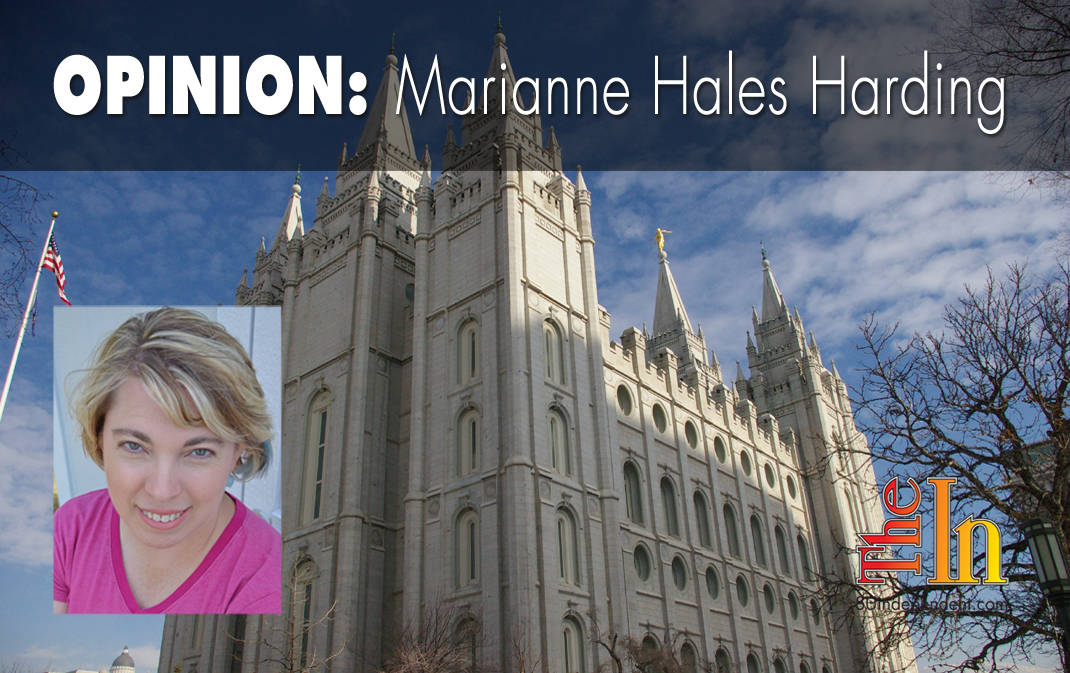
When my sister and I attended Brigham Young University’s Education Week this year, we weren’t expecting mansplaining and sexism to be part of the discussion. This is our third year, so we are still relative newbies. We didn’t realize that a class in 3220 WSC is a class with two overflow rooms (aka popular), so we ended up snaking through three different classrooms’ worth of line and landing in the large “audio only” overflow (overflow No. 2). The class, a thoughtful discussion of the temple, was still well worth the effort, so the next day we came two classes before the targeted class so we could be in the actual room with the speaker and slides. You have high expectations when you put in that much effort, but again, it was well worth it.
The speaker, Alonzo Gaskill, was a prime example of why you go to Education Week: He was thoughtful, faithful, incredibly well-read, and insightful. He was also wrong. Not capital W wrong. Not picket-the-Wilkinson-Center wrong. More of a “thanks for playing” kind of wrong.

He opened with an article he had read that quoted Mormon women about their misgivings about LDS temple services. I can’t remember if they were quoted anonymously, but in any case it was an article, not a kitchen-table discussion, and he couldn’t really directly address these specific women. After expressing regret that this was the case, he laid out an interpretation of the historical and doctrinal underpinnings of modern temple worship that he felt addressed their concerns. I have to award very genuine kudos for that. Too often, concerns like this are dismissed with the assumption that such expression is evidence of a lack of faith or of impending (or current) religious inactivity. Engaging in thoughtful dialogue is exactly what we need for these and other issues.
I’m simplifying this tremendously, but the basic idea that Brother Gaskill conveyed is that temple worship falls in line with the common metaphor that the church is the bride of Christ (see Ephesians 5:25, Revelation 21:2, and Matthew 25 for starters). In the endowment, according to Gaskill, women represent the church and men represent Christ. Because of this, all references to the subservience of women are really metaphors for all humanity’s (women’s and men’s) subservience to God. He also noted that having women veil their faces is symbolic of humanity’s need to rely on God (as well as further visual for the bride of Christ metaphor). He went into much more detail in the hour-long class (and has several books on the subject: “The Truth About Eden: Understanding the Fall and our Temple Experience,” “Temple Reflections: Insights into the House of the Lord,” and “Sacred Symbols: Finding Meaning in Rites, Rituals, and Ordinances”). It was fascinating. But his oft-repeated refrain bugged me: “The archetype erases all of the sexism.”
I appreciated his perspective. I was glad that he didn’t attend the temple and think “you are less than me” when looking across the room at his veiled sisters. His research and thoughtful consideration enriched my own temple worship. But erase all of the sexism? That it did not do.

First, it was a bit arrogant to presume that the way you’ve worked out an issue for yourself 100 percent addresses someone else’s concerns. In fact, it sounds a lot like mansplaining. I know he meant well, but please, Brother Gaskill, don’t mansplain the temple for me. Even just a little bit. Put forth your theories, sure. Continue the discussion. But don’t close the case without input from the people who raised the concerns in the first place. It reminds me of when I have a student turn in a paper with a note that their mentor/tutor has already told them that the paper was passing. Well, gosh, then I guess my opinion on the paper doesn’t really matter. I’m just the one in charge of actually evaluating it. The heart of mansplaining is setting yourself up as the expert on someone else’s thoughts and feelings. Any man, no matter how well researched, is not going to be the be-all-end-all expert on how a woman feels about the temple (which is not to say that a man isn’t welcome in the discussion).
It’s really a matter of how it is framed. Maybe instead of “The archetype erases all of the sexism,” you say “The archetype really helps me to overcome questions of sexism in temple imagery.” Second, even if you embrace the “bride of Christ” archetype, it doesn’t take a big leap to understand why people might find it sexist that men are always the ones in the god role in the endowment. Yes, Brother Gaskill pointed out that women take on that archetypal role in the initiatory ordinance, but while men take on the god role for men and women, women only take on that role for other women. That’s a bit of sexism the archetype doesn’t address.
Let me be clear: I am not in any way protesting the temple ceremonies. But I take exception to the idea that it would be illogical and inappropriate to raise issues of sexism in relation to temple worship. I was endowed nearly 22 years ago. I’ve been to the temple as a single person, a married person, and a divorced person. I was an ordinance worker, briefly, before my oldest child was born. I feel strong and empowered in the temple. As a temple worker, I thrilled in being authorized to perform ordinances with the power of God. As a temple patron, I draw strength from the peace found in the temple and from specific blessings received there. I feel like the universe opens up with my potential in these walls. But I also know that wording and presentation have impact. And I know that even with the best intentions, we can get things wrong.
Recently, I pointed out to a friend what I perceived to be sexist phrasing on a restaurant menu (and, to answer the inevitable question, yes, the discussion will someday be part of a piece for The Independent). Her response was “I’m sure they didn’t mean it that way.” Ever hopeful for humanity, I’m sure they didn’t consciously demean women on their menu, either. At some point, though, intent loses relevance. The reason we point out problematic phrasing regardless of intent is because we’re trying to root out cultural practices that are not in line with intent. Talking about the temple is different than talking about menus, because menus don’t include an element of revelation, but I don’t think it’s out of line to point out that whatever the metaphor, the optics leave something to be desired. So let’s keep chatting about that. But let’s also make sure that all voices in this discussion feel heard and respected. No more mansplaining, please.
Articles related to “Mansplaining the Temple at BYU’s Education Week: Examining charges of sexism”
Talking about marriage at church: Another sucky thing about being single and Mormon



